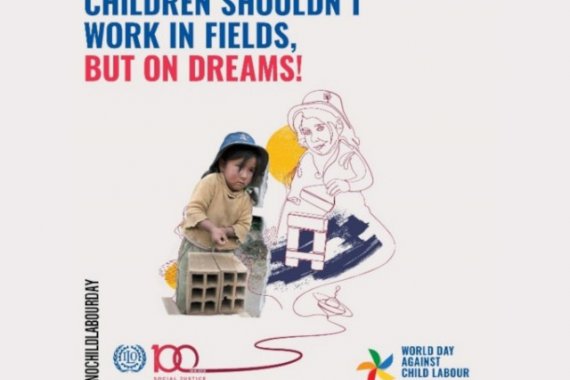“Children shouldn’t work in fields, but on dreams!”
“Children shouldn’t work in fields, but on dreams!”
This year’s World Day Against Child Labour (WDACL), celebrated on 12 June, has been an opportunity to reflect on the history of the movement to end child labour, its progress and challenges, and to advocate for rapid progress in achieving universal ratification of the child labour Conventions and SDG Target 8.7.
12 Junho 2019

In the 20th anniversary year of C182[1], with only a few countries still to ratify, WDACL is an opportunity to aim for the first universal ratification in the ILO’s history.
In 1919, the Treaty of Versailles established the ILO, and the aim of abolishing child labour was stated in its Constitution. Over the years, WDACL has been an opportunity to draw attention to many issues, including the benefits of education in combating child labour; child labour in mining, agriculture and supply chains; and the imperative of protecting against child labour in situations of conflict and disaster.
While the number of children in child labour, especially those doing hazardous work, fell significantly between 2000 and 2016, global efforts must be accelerated if the 2025 target of completely eradicating child labour is to be achieved.
For further information, please visit the World Day campaign page, which will be further developed in the coming months.
For information on training activities run by the Centre in this area, visit:
https://www.itcilo.org/en/areas-of-expertise/unacceptable-forms-of-work
[1] C182 - Worst Forms of Child Labour Convention, 1999 (No. 182)
Convention concerning the Prohibition and Immediate Action for the Elimination of the Worst Forms of Child Labour https://www.ilo.org/dyn/normlex/en/f?p=NORMLEXPUB:12100:0::NO::P12100_ILO_CODE:C182